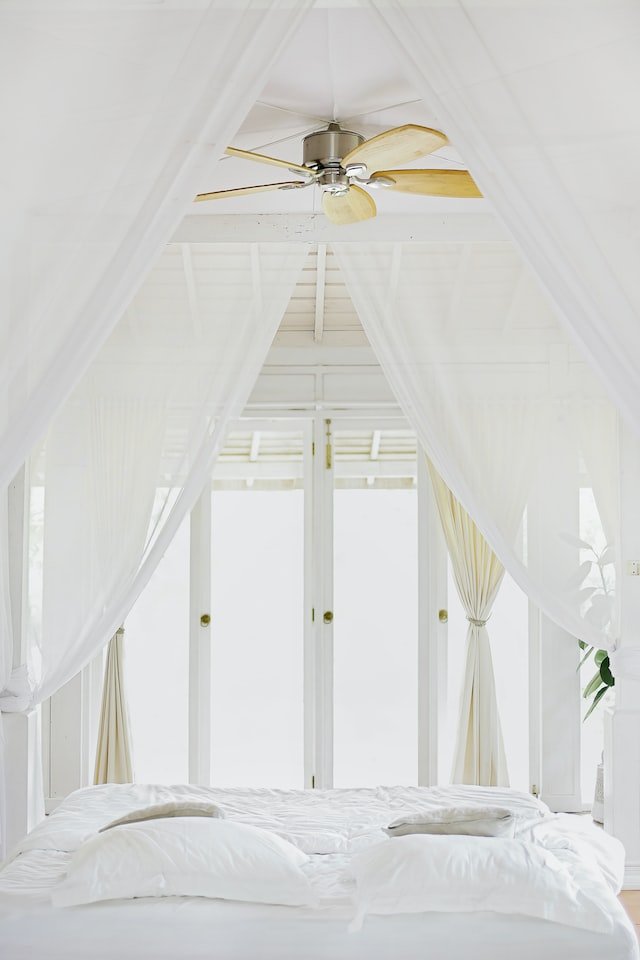
How is bamboo fabric produced?

Did you know that bamboo is part of the grass family? Or that bamboo can grow up to a staggering three feet a day whilst only needing around a third of the amount of water as cotton? There’s no doubt about it: bamboo is a game-changer in being more sustainable.
It has gained popularity over the last few years thanks to being an eco-friendly alternative to cotton. From socks to sheets, bamboo material can be used to make various high-quality, luxuriously soft products with less of the environmental impact of alternatives such as cotton.
But if you’re now wondering how the bamboo fabric is produced, then you’re in luck! Read on to find out more about how bamboo material is made and the different stages bamboo goes through to create this luxuriously soft and sustainable material.
What is bamboo fabric?
Made from bamboo, there are two main types of bamboo fabrics: bamboo rayon and bamboo linen. Both are naturally hypoallergenic, moisture-wicking, and incredibly breathable; there’s so much to love about bamboo fabric.
How is bamboo fabric made?
Bamboo fabric is created from bamboo timber which has grown for at least four years. Farmers mark or code bamboo with a year code every summer to ensure the shoots reach their full height and maturity. Below we’ve listed the eight steps that bamboo goes through to become bamboo fabric.
1. Plant the bamboo
Bamboo must be planted in the spring, generally between March and June.
2. Harvest time
Once the bamboo shoots have reached full maturity at four years old, they’re harvested and taken to a bamboo mill.
3. Cut the bamboo into pieces
Next, the bamboo shoots need to be cut into strips and chips. Using a wooden or metal saw, the bamboo stalks will be cut into strips, whilst the shoots will become chips.
4. Create a bamboo pulp
This mix of bamboo pieces is then taken to a mill, where they will be crushed and broken down before adding the mixture to a pulper machine. The mix will be heated in the pulper to around 145C and heated with steam until a bamboo pulp has been created.
5. Blend with enzymes
From here, the pulp is submerged in a solution such as L caustic soda or sodium hydroxide for 1-3 hours to extract and dissolve the bamboo’s cellulose.
Some manufacturers extract cellulose and use that to create bamboo rayon material.
6. Filter with water
The bamboo mix is then filtered with water to remove any trace of the chemicals. The blend must be completely dry before moving on to the next step.
7. Spin into yarn
After all the soaking, stripping, and drying, you’re left with very long fibres. These fibres are now spun into yarn. The longer fibres are what make bamboo yarn so unique. They’re more robust and flexible than other yarns and aren’t as susceptible to fraying or damage. Plus, bamboo yarns have a natural elasticity of around 20%.
In addition, the hollow nature of bamboo fibres contributes to its high absorbency, making it so moisture-wicking. These hollow fibres also mean that bamboo is much more colourfast than other fabrics and can absorb colour and pigment more efficiently.
8. Weave into fabric
This yarn is then woven into fabric; depending on the manufacturing process and the characteristics of the desired material, the process might be slightly different.
What’s so great about bamboo fabric?
We’ve already mentioned some of the great features of bamboo fabric, but here are our top three favourite things about bamboo material:
- Bamboo fabrics are luxuriously soft, making it gentle and comforting against your skin.
- Thanks to its antibacterial and naturally hypoallergenic properties, bamboo fabric is perfect for those who experience allergies.
- Bamboo materials are breathable, UV resistant and wick away moisture amazingly.
All these qualities mean that bamboo fabric is perfect for bedding. We especially love sumptuously soft and luxurious, naturally hypoallergenic bamboo bedding it’s gentle on your skin and on the planet. And the breathable bamboo fabric guarantees that you’ll be at the perfect temperature throughout the night. The 100% bamboo bedding has a 320-thread count, equivalent to an incredible 1,200 cotton thread count!
Whether you’re looking for an eco-conscious alternative to cotton or the perfect bedding to fight back against hot summer nights or cold winter mornings and catch those high-quality zzzs, bamboo bedding is the right thing for you.
Featured Photo by Eleonora Albasi on Unsplash



![Wickedly Good Halloween Cocktails [COCKTAIL TIME]](https://luxebeatmag.com/wp-content/uploads/2024/10/Diplomatico-Rum-Blood-Moon-Negroni-150x150.jpg)










![Hotel Bella Vista celebrates its 60th anniversary [INTERVIEW]](https://luxebeatmag.com/wp-content/uploads/2022/04/Hotel-Manager-Fabienne-Anthamatten-440x264.jpg)























